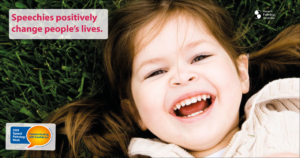There are 1.2 million Australians with communication disability. A large number of these people are children and young adults who need early support to ensure they participate fully in education and build healthy relationships to create a better future for themselves as adults.
Speech pathologists like Amy McAlister from child therapy clinic Youthrive work with children to provide them with the confidence to communicate and lead happy, successful lives.
Ms McAlister said early intervention was critical to prevent or reduce the lifelong implications of communication difficulty.
“Sadly, communication disability remains largely invisible. Unseen and out-of-sight.”
“In Australia, 20% of four year old children have difficulty understanding or using language.”
“It’s important that parents seek support from a speech pathologist if they have concerns about their child’s communication – don’t just ’wait and see’,” she said.
The coronavirus (COVID-19) pandemic has highlighted the challenges faced by Australians with communication disability.
That’s why during Speech Pathology Week, from 23-29 August, Ms McAlister is highlighting the week’s theme: Communicating with Confidence.
“Communicating with confidence is vital to enable everyone to participate fully in the social, educational, economic and sporting aspects of community life across Australia,” she said.
“Australians with communication disability cannot maximise future educational, health and social outcomes, without the intervention of a speech pathologist.”
Only 38 per cent of Australians with communication disability are participating in the workforce compared with 80 per cent of people without communication disability.
People with communication disability are also less likely to have a non-school qualification (42 per cent), than those without communication disability (61 per cent).
“Communication, by definition, involves at least two people. It is important that everyone understands that communication is more than speech,” Ms McAlister said.
“Australians with communication difficulties communicate with others using a variety of means, including word-based or picture-based communication boards or books, sign and gesture, and spelling.”
“Technology is playing a growing and vital role in keeping Australians with communication difficulties engaged with their family, friends and those in the Springfield community.”
Assistive technology, such as electronic communication and speech generating devices, voice amplification and computer access aids (including eye-gaze mouse control and head tracking devices) allow people with communication difficulties to communicate with those around them.
The Australian Bureau of Statistics has established that 1.2 million Australians have communication disability. Communication disability affects a person’s ability to understand and be understood by others.
- Levels of limitation range from mild to profound and can be temporary or last a lifetime.
- Children and older people make up the majority of people with communication disability.
- Children are more likely to have profound/severe communication disability than older people.
- People with communication disability were less likely to have a non-school qualification (42%) than people without communication disability (61%).
- Thirty-eight percent of people with communication disability are participating in the labour force compared with 80% of people without communication disability.
- One in 7 people with communication disability need formal assistance with communication.
- Half of all people who need formal assistance with communication have an unmet need for this assistance.
- Three in 5 people who have an unmet need for formal assistance with communication were children.
For information about Speech Pathology Week visit www.speechpathologyaustralia.org.au/week